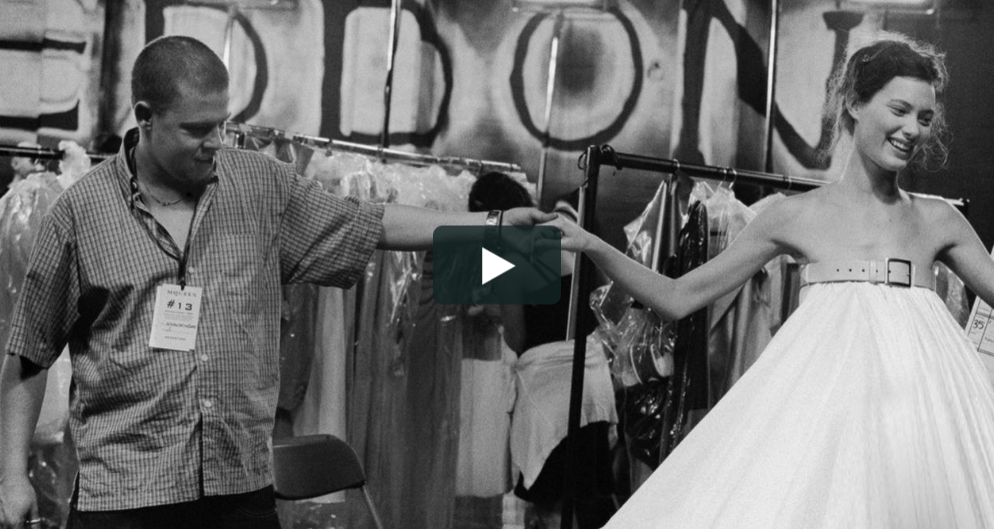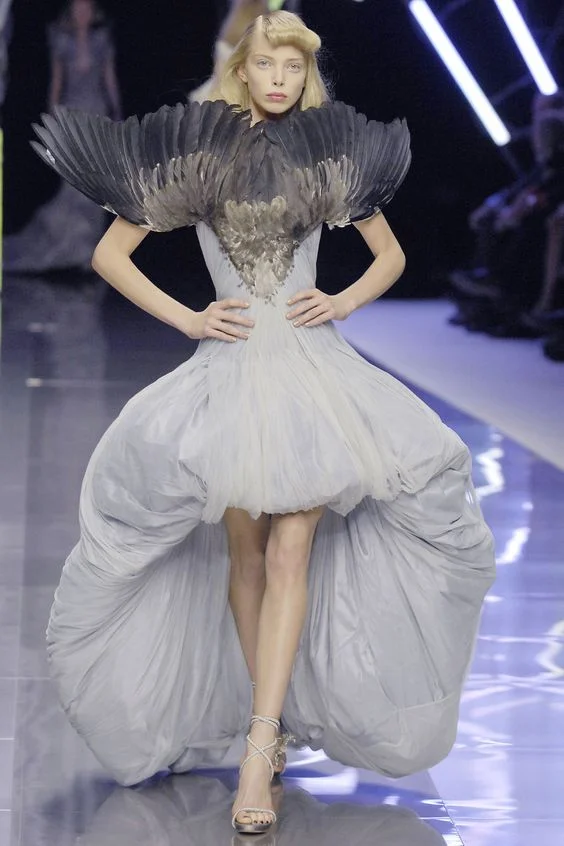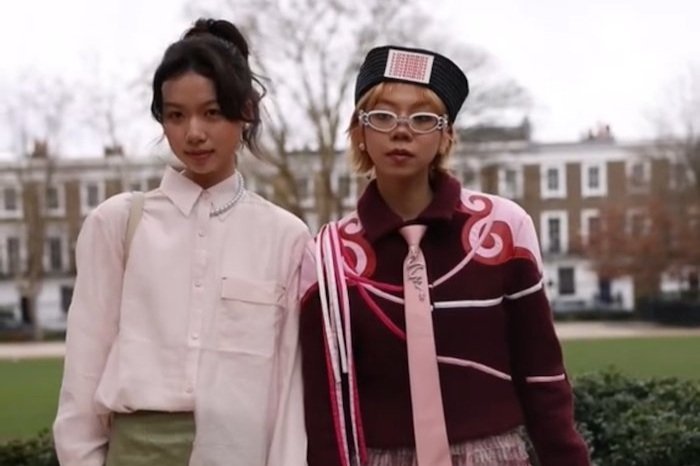McQ, McQueen, Alexander, Lee --- Behind the Work He Found Beauty Anywhere
Written by Elena Chen
A tailoring extraordinaire, business entrepreneur, and fashion icon. The late Alexander McQueen was a man who sought to preserve the theatrics of fashion regardless and often in anticipation of the consequences that came with expressing fashion as he saw it. Known for his provocation, McQueen is not one to shy away from controversy. From the one collection finale showcasing a naked Michelle Olley to the mooning incident of another show undertaken by McQueen himself, the designer utilises the runway as a site of performance for the audience to be reckoned with and for the disruptive journeys of finding beauty in unexpected places to take place.
As a Londoner from a working class family, McQueen left school at 16 to pursue a tailoring apprenticeship. He then enrolled in a MA at Central Saint Martins, a school with a highly reputable fashion design programme. Producing his own shows from welfare finances, Lee McQueen soon became Alexander McQueen, a brand of his own. In 1996, he took up a position as Creative Director of Givenchy to finance Alexander McQueen. Despite the creative differences between a traditionally haute couture fashion house, McQueen left his mark on the designs and as per tradition, brought controversial publicity. His designs never failed to include the gothic. With this talent for enticing beauty from darkness came a tortured soul who ultimately took his own life after the loss of his friend and champion, Isabella Blow, and his lifelong supporter and mother, Joyce McQueen. Since his untimely death, a retrospective titled Savage Beauty has presented for the wider public a selected body of work that traveled from the Metropolitan Museum of Art in New York to the Victoria and Albert Museum in London, where the final showings of the exhibitions were held close to 24 hours a day in order to meet demand.
McQueen Exhibit at Victoria and Albert Museum, London
One of the exhibits was a miniature replica of the hologram technology installed for a show, where a levitating Kate Moss donned a towering dress of chiffon to the accompaniment of the Main Theme in Schindler’s List.
In another gallery of the exhibition, McQueen’s intentions against “throwing a cocktail party” is made clear. In his words: “I’d rather people left my show and vomited. I prefer extreme reactions. I want heart attacks. I want ambulances.” His 1996 collection Autumn/Winter collection Highland Rape perhaps best encapsulates this imperative. Inspired by the murder committed in name of “ethnic cleansing” targeting the Scottish Highlands, McQueen sent female models down the runway in slashed garments, exposed nipples and disheveled hair. Of course, the details were intentional. Part Scottish, McQueen also had a personal element in the collection. The controversial reception towards the collection over McQueen’s opinion of women in the apparent portrayal of their victimhood and the seeming minimisation of violation highlights McQueen’s genius in the simultaneously delivering an invitation for discussion and debate on the politics of his own ancestry and the perception of women through fashion.
This year, 8 years on from his death, McQueen was released. One reviewer expressed its synopsis as:
What was not previously divulged in his work was given some spotlight in the documentary "McQueen", directed by Ian Bonhôte and written by Peter Ettedgui. The film reviews are all out --- The Guardian, Rolling Stone, Variety --- and revel in the personal trials and tribulations that have in some way, shape or form, contributed to the artist we now see as a household name in fashion. Other texts have outlined McQueen’s life story in impeccable detail --- bolstered by the factual support of dates, names, and places. What is lacking in diction and told through the experience of film is the persistent emotionality in "McQueen", the soul of a person who became an artist. It is in McQueen’s systematic relay of the addiction, pressure, friendship, turmoil and loss that accumulated with great intensity towards the end of McQueen’s life that the film reminds us of same project McQueen always upheld: beauty can be born from the darkest of places.



















